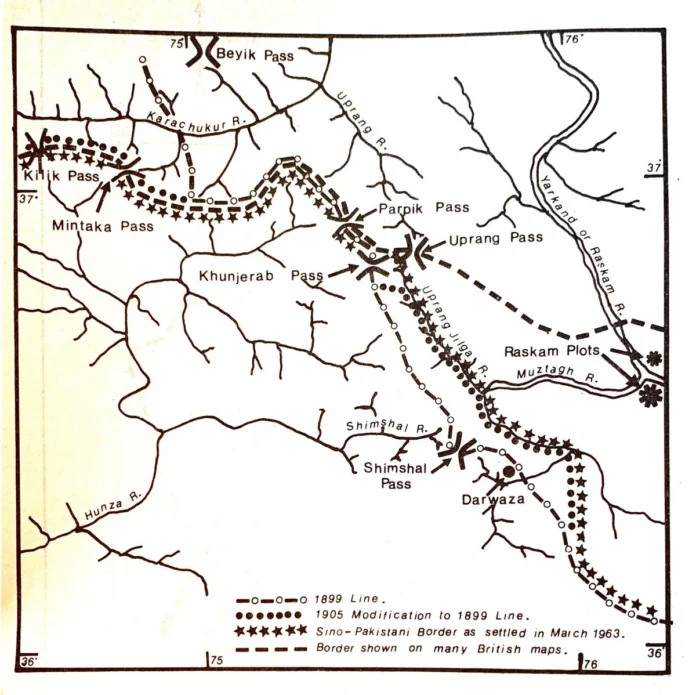The Indian media, a propeller of fib and rumors, has long been peddling a myth that Pakistan has bequeathed a part of Kashmir to China. The statement is intended to bring dismay to the people of Kashmir along with maligning Pakistan and its diplomatic strategies. The truth, and a careful look into the history, however, is a reflection onto India’s great defeats followed by cover-ups based on cock and bull stories.
The bone of contention is the Shaksgam Valley or the Trans-Karakoram Tract which is an area of approximately 5,200 square kilometers north of the Karakoram watershed. It borders Xinjiang Province of the People’s Republic of China (PRC) to the north, the northern areas of AJK to the south and west, and the Siachen Glacier region to the east.
In 1860s, a British Survey officer, W. H. Johnson demarcated the region including Aksai Chin and Shaksgam in the boundaries of British India. However, this proposal, the Johnson line, was rejected by the British India and deemed unacceptable. In 1899, a second demarcation of India and China borders was drawn by Sir Claude MacDonald according to which China was to relinquish Hunza (now Gilgit Baltistan) and India was to let go of the Raskam Taghdumbash districts (the Trans Karakoram Tract). This line is also known as the McCartney – MacDonald line. All was well until India published its own map in 1957 claiming the region of the said tract as per the discarded Johnson line. The discord led up to the Sino – India war of 1962, which India lost and Aksai Chin came under control of China.
Where does Pakistan come into this?
A formal boundary agreement was signed between Pakistan and China in March 1963 by the then foreign ministers, Chen Yi and Zulfiqar Ali Bhutto from China and Pakistan respectively. The agreement commencing from Pakistan’s north western frontier at the height of 5,630 meters, the boundary line runs eastward from that point and then South-eastward along the main tributaries of the Tashkurgan River on the one hand running till the tributes of the Hunza river. Crossing through the Khunjerab, the boundary line goes generally southward along the afore-mentioned main watershed and the Taghumbash River and the Koliman Su (Oprang Jilga) on the other hand. Pakistan recognized Chinese sovereignty over the Shaksgam tract, while China recognized Pakistani sovereignty over the Gilgit Agency. It was further delineated categorically that after the settlement of the Kashmir dispute, both sides will negotiate again on the boundary issue. (Article 6)
This decision was in line with the prior demarcation set by the McCartney – MacDonald line. It is clear as the daylight that Pakistan did not hand over any piece of Kashmir to China, rather gained some of the land in the Hunza region. Since this demography deprives India of over 5200 sqkm of land along with a cut on its control over Kashmir, it has resorted to fabrication and propaganda.
REFERENCES:
https://www.greaterkashmir.com/todays-paper/question-number-13
https:// historypak.com/pakistan-china-boundary-agreement-1962/






